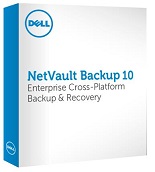Dell currently has two different backup and disaster solutions to choose from, AppAssure and NetVault. Although Dell plans on merging the two together eventually, right now if you’re looking for Read More
What’s new in Axence nVision ver 8.2.1.20202
Axence nVision Pro provides network and user activity monitoring, software and hardware inventory, data leak prevention, remote control, and a wide range of reports, alerts and corrective actions – all Read More
How to manage Mozilla Firefox download ?
Use Mozilla Firefox’s add-ons to manage your download. For example in this example, we’re using DownThemAll!. Feel free to watch this video below for better grasp of this add-ons.
GraphOn vs. Microsoft and Citrix
GraphOn vs. Microsoft and Citrix GO-Global is the easy application access and Web-enabling solution that provides instant access to Windows, UNIX, and Linux applications. It eliminates the need for complex Read More
12 Tips for Increasing Computer Speed
Nothing slows business down more than a sluggish computer. Of course, Apple fans will be pleased to note that there are not many tools for them here because. . .well, Read More




